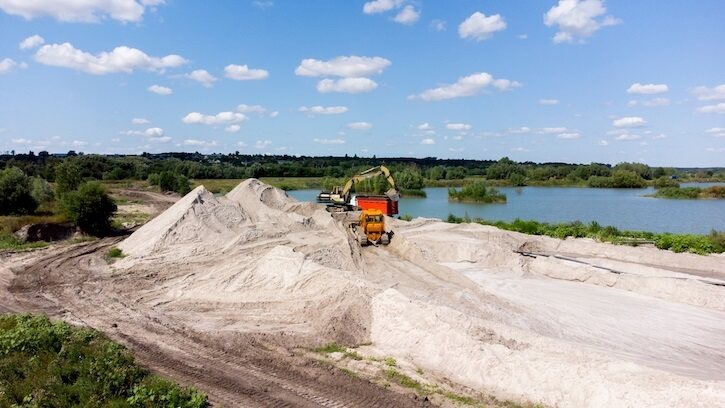
Nature positive at speed and scale: Nature intelligence is key for mining’s systemic shift
The race to net-zero is driving the fastest energy transition in history. The International Energy Agency (IEA) has suggested that by 2040, we will need to quadruple our mineral supply to meet the goals of the Paris Agreement. This means a lot more mining to gain the raw materials needed for decarbonization. While this may look like a carte blanche for prioritizing minerals over nature, this could not be further from the reality.
Recognizing the role that biodiversity plays in building resilience against climate change, and with wildlife populations plummeting globally by 69 per cent since the 1970s, it is clear that growth in the sector cannot come at the cost of nature. However, with as much as 20 per cent of mines already located in biodiversity hotspots, the industry needs to assess and measure the impact of mining operations and downstream processes on the environments and ecosystems.
Recent years have seen the launch of multiple frameworks established to promote the protection, conservation and recovery of biodiversity, including the Global Biodiversity Framework (GBF), Science Based Targets Networks (SBTN) and the Task-Force on Nature-related Financial Disclosure (TNFD) – the latter being a nature equivalent to the earlier Taskforce on Carbon-related Financial Disclosures (TCFD). These are targeting stakeholders across the mining ecosystem from investors, miners and even plant providers.
In January this year, the International Council on Mining and Metals (ICMM) pledged its commitment to a nature positive future by 2030 at the 2024 World Economic Forum in Davos. That is, to promote the health, diversity, and resilience of species, ecosystems, and natural processes with a five-point action plan for nature. This includes protecting and conserving pristine areas of our natural environment, halting biodiversity loss at operations, collaborating across value chains, restoring and enhancing landscapes, and catalyzing wider change. This is further evidence of a systemic shift in the sector towards nature positive.
Reducing mining’s impact in this short time frame requires measuring and reporting on nature at speed and scale. However, while carbon accounting and mitigation provides an analogue and blueprint for nature reporting, nature is much harder to quantify. While carbon is measured in tonnes of CO2, biodiversity – which is loosely defined as the variety and number of plant and animal species in a given location – varies considerably across time and space. It is this very diversity in biodiversity that makes it so inherently challenging to measure.
 Acquiring the data for reporting typically needs expert ecologists in the field for extended periods of time. Conventional, observation-based methods are time-consuming, expensive, and can be invasive or destructive. Yet, even the availability of taxonomic experts to perform this work produces a bottleneck, as demand outstrips supply, limiting the collection of data at the speed and scale needed to meet nature positive.
Acquiring the data for reporting typically needs expert ecologists in the field for extended periods of time. Conventional, observation-based methods are time-consuming, expensive, and can be invasive or destructive. Yet, even the availability of taxonomic experts to perform this work produces a bottleneck, as demand outstrips supply, limiting the collection of data at the speed and scale needed to meet nature positive.
However, new technologies are changing the status quo when it comes to measuring biodiversity, producing comprehensive biodiversity data and insights which can be summarized as ‘Nature Intelligence’. These innovations include:
- Environmental DNA (eDNA) – detecting species and biological communities by identifying tiny traces of DNA they shed to their environment which can be collected and analyzed to provide a snapshot of the biodiversity.
- Earth observation – Using remote sensing technology, such as satellite or drone cameras, scientists visually analyze certain biodiversity indicators such as species distributions, habitat types, and environmental factors, even creating digital twins to track change.
- Bioacoustic technology: Combined with a biological understanding of animal sound production and dispersion, this technology allows scientists to record, identify, and monitor animals by their sounds to give an accurate picture of biodiversity within an area.
The granular scale at which biodiversity can be repeatedly monitored and assessed using these technologies enables companies to monitor, report on and, above all, better manage their operations’ relationship with nature on unprecedented scales compared to conventional methods.
Companies, including Anglo American, Sínese, and Rio Tinto, have already found success deploying Nature Intelligence technologies to support their drive to nature-positivity. As an example, for Anglo American, eDNA has transformed their biodiversity monitoring across the project cycle, and they have deployed the technology in 16 projects across 11 countries since 2020.
Ultimately, decarbonization will not be possible without exploring and exploiting existing and new mineral deposits, but we can minimize the impact this will have on biodiversity through nature intelligence. These technologies will play a key part at all stages of the mining life cycle from exploration to closure. Most crucially, as the various frameworks that have been recently launched inevitably become incorporated into legal frameworks across the world, the datasets and insights that nature intelligence can provide will allow companies to report on their biodiversity impacts efficiently. This will provide the evidence-base to optimize management towards better outcomes for nature, while meeting the raw material needs of net zero.
Dr Joe Huddart is a Biodiversity Solutions Engineer, and Marta Felton is Head of Business Development, North America at NatureMetrics. NatureMetrics is a global nature intelligence technology company providing an end-to-end nature monitoring and impact reporting solution. Its Nature Intelligence Platform, powered by eDNA, enables businesses to manage their impacts and dependencies on biodiversity at scale, converting the complexities of nature into simple insights to inform the best decisions for nature and business. NatureMetrics’ mission is to empower the best decisions for nature to build a nature positive economy.